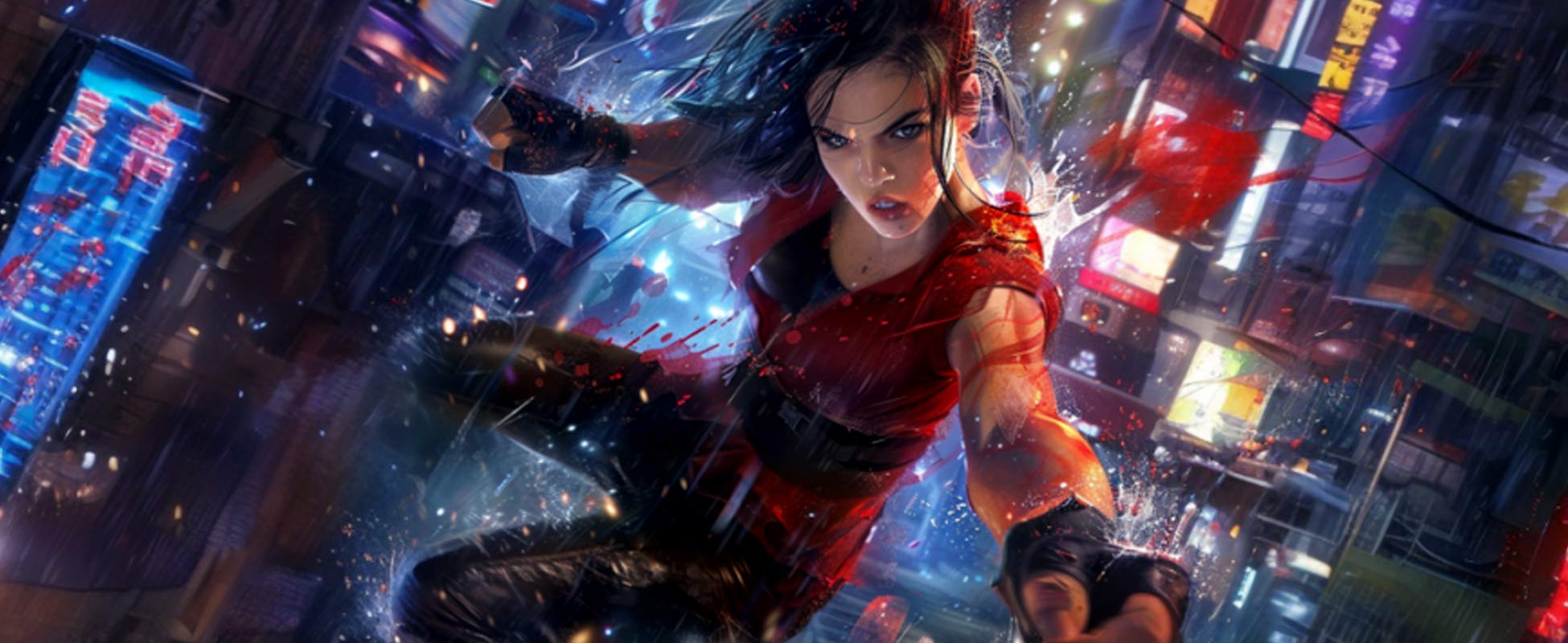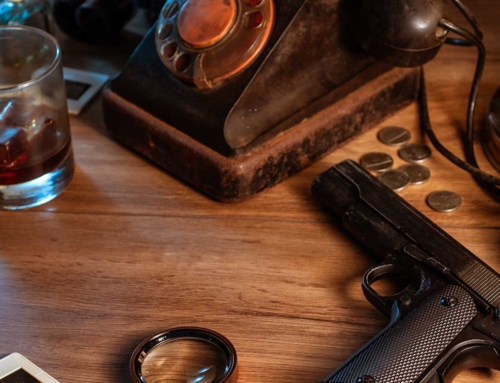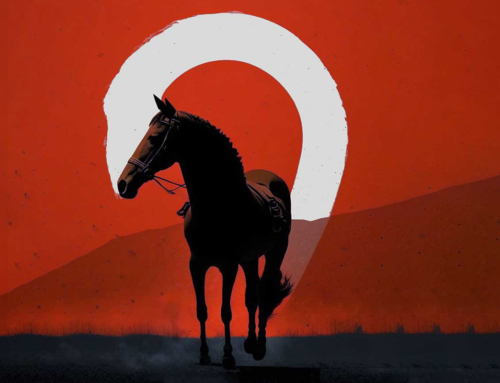
Women Heroes
Kickass Women in Books and Movies
We all know the kick-ass heroines that modern mystery and thriller novels and movies portray—the ones who can kill a man with her bare hands—the ones who can shoot a gun to the left of their shoulder and kill a man standing on her right shoulder—the females who are in many cases men’s superiors. These women heroes have been popping up more frequently since The Girl with the Dragon Tattoo thriller novel, by Swedish author Stieg Larsson, released in 2005, and the movie adaptations that followed.
The best women heroes in fiction have a common quality: resiliency. From Jane Eyre to Lisbeth Salander to Seth, the heroines who have endured as memorable characters do so because they are survivors, not victims.
With Women’s History Month coming in March, we’ve put together a short list of women heroes in books and movies—the majority never touching a gun, but a sword or a bow and arrow are not out of the question.
The women in our list are sometimes flawed, sometimes complicated, and sometimes unlikeable, but they remain fascinating characters. We find ourselves entranced by their stories regardless of flaws. It’s the imperfections in these women that make them great. They are all kick-ass females—and their books deserve a shelf all to themselves.
Arya Stark
In George R. R. Martin’s bestselling novel A Song of Fire and Ice, the female character Arya Stark is described as a small but fiery force to be reckoned with who outwardly scorns noble female hobbies like sewing and dancing in favor of sword fighting and horseback riding. After a series of tragedies force her to flee her home, the character remains a survivor, overcoming grief, fear, and near-death experiences to find the strength she needs to avenge her family’s dishonor.
Arya Stark embodies the epitome of a strong female protagonist. Regardless of her feminine qualities, she is equally comfortable in both the world of men and in the world of women. In addition to being brave and strong-willed, Arya is also sensitive, as well as cunning, and capable.
Arya is a character as complex as they come, and her strength lies not just in her physical ability or her moral compass but also in her intellectual fortitude. She doesn’t let being small or female keep her from being one of the best fighters in the kingdom, and she uses that intelligence to read, study and use knowledge to her advantage.
To call Arya Stark a feminist character underplays the depth with which Martin has created her. Not all feminists are focused on women’s rights; similarly, not every female character should be pigeon-holed that way. All that matters is authenticity in the portrayal of Arya’s gender—and there’s no mistaking the fact that she doesn’t just make a statement but dares to raise questions about female identity within male society.
Elizabeth Bennett
Elizabeth Bennett, affectionately known to her friends and family as Lizzie, is the stubborn and witty heroine of Jane Austen’s 1813 novel Pride and Prejudice. She is the second eldest of five daughters in the Bennett household. Her family expects her to marry for money and status, not for love. She is willing to remain single to remain true to herself, a concept unheard of at the time.
Elizabeth rejects the idea of marrying a man she can’t respect to attain an advantageous social position. She even walks away from the man she eventually comes to love, Mr. Darcy, after he makes a bad first impression. Elizabeth Bennett is snarky, witty, and doesn’t back down from her principles; she would never be content with a superficial relationship and remained true to herself as a strong female character.
Lizzie is a strong female character because no one tells her what to do. She has a mind of her own and doesn’t let anyone—not even the man she falls in love with—stand in her way. She’s a warrior, standing up for herself and for feminism at the same time. And she does all of this in 1813!
Austen’s own life story bears a remarkable resemblance to that of her leading character. A devout critic of marriage herself, Austen took the time to craft an immense female character whose intellectual drive and down-to-earth demeanor made her the perfect role model for young, intelligent women–even though young women today still face many of the same struggles as they did in Austen’s era.
Through the pages of Pride and Prejudice, Elizabeth’s decision making and wit serve as a wonderful example of what makes a compelling character in literature. Although there are a few dissenting opinions, most readers believe that Elizabeth Bennett is a hero. As such, she teaches both girls and boys to be strong and independent, not to settle for a partner based on money or status, and to remain true to their values.
Esch
Teenager Esch in Jesmyn Ward’s novel Salvage the Bones, winner of the National Book Award for Fiction, has no idea that her life will change in less than 18 hours.
A hurricane is coming … a hurricane named Katrina.
Her mother is dead, her father is a drunk, and she’s pregnant. Not just any pregnancy, but one she’ll keep: a child she didn’t plan for, with a boy who doesn’t want her anymore.
Esch is an ordinary girl with an extraordinary problem. She lives in Bois Sauvage, a predominantly Black Mississippi bayou town on the Gulf Coast, which is about to get hit by Hurricane Katrina. With her pregnancy, her boyfriend, Manny, won’t even look at her anymore. Esch can’t run away from her troubles—she’s stuck in Bois Sauvage. Regardless of what happens to Esch, she deals with her situation like a bright and resilient girl; she works hard to help rebuild the town after the storm passes.
We learn valuable lessons from Esch’s ordeal. The first and most apparent is that Esch doesn’t give up on her dreams despite the many challenges she must endure. She still cares about how other people see her. She even manages to find happiness … and hope … in some of life’s darker moments.
In literature, there is a type of character that defies all stereotypes, who endures despite suffering and having all the odds stacked against her favor. Smart, resilient women willing to do anything to survive—this is Esch.
Readers taking time to explore who this girl really is will be inspired to read and delve more into Hurricane Katrina’s devastation.
Hermione Granger
In the world of fiction, particularly in the realm of a magical series written during the 1990s when the book Harry Potter and the Philosopher’s Stone was published, the role of a female was often reserved for a love interest. Hermione Granger is an example that contradicts this notion. She is not just a supporting character. In fact, she plays an integral part woven into the story of a world of wizards, witches, warlocks, sorcerers, and magicians.
Hermione Granger is a brilliant muggle-born witch and a loyal friend to Harry Potter and Ron Weasley. At first, she is known for her bossy nature and academic achievements, and then for her loyalty and bravery. As a character, Hermione is more than just an academic overachiever who can name any ingredient in a magical potion – she’s also a warrior who stands up to injustice in all forms.
The novels in the Harry Potter series are an account of the events taking place in a world where everything happens for a reason, which is precisely why the books are such an enjoyable read. When we read about Harry Potter alongside the character Hermione Granger, we witness that there’s always a greater purpose behind the magic than what is shown. Everyone has their role to play, and no one should be left out.
The world revealed in the Hogwarts School of Witchcraft and Wizardry is full of recurring magical themes and symbols. Understanding these themes and symbols can help us to understand the series as a whole and gain a deeper understanding of its thematic elements; in turn, we can apply these themes to our own lives. Unfortunately, many readers overlook the series’s more subtle and intricate elements; they look at the larger-than-life heroes, the brilliant plots and subplots, the fantastic creatures, and better-than-life locations, and they miss what Rowling is saying about real life.
If you want the magic to start, go ahead and give the Harry Potter books a try … you won’t regret it and disappear!
Hester Prynne
In Nathaniel Hawthorne’s 1850 novel, The Scarlet Letter, the main character is Hester Prynne, regarded by some as one of the most influential women in literature—her character trapped by moral absolutism.
The Scarlet Letter, lauded for its masterful use of detail, human psychology, and the boundaries of society, is popularly read in world literature classes in high school and college and is often included in surveys of important works from American history and culture.
But don’t let that stop you from reading it!
The setting for the book is seventeenth-century Puritan Boston, and it tells the story of Hester Prynne, a woman ostracized for having an affair and giving birth to an illegitimate child. Hawthorne explores the themes of the individual versus society, sin and guilt, and hypocrisy through this character study.
Despite her blatant sin and subsequent rebuke by the Puritan community to which she belongs, Hester refuses to repent for her adultery and never conforms to the standard image of a truly good woman—that is, a Puritan one, who is submissive and without will. Yet Hester is not without remorse for her actions; she seeks redemption but is never able to attain it fully.
Hester has become symbolic of sexually empowered women. Her character and story have endured through centuries because of her complexity and individuality.
Hua Mulan
Despite the fact that you probably first knew of the next hero from an animated Disney movie, Mulan was originally imagined in the fifth-century Chinese poem “The Ballad of Mulan” and reinterpreted in several literary and non-literary forms through the centuries. In the poem, as in both Disney film interpretations, a young woman named Hua Mulan disguised herself as a boy and left her family to serve in the army after her elderly father was deemed unfit for combat. She vowed never to reveal her identity to anyone and used her quick wit and martial arts skills to win the respect of her fellow soldiers.
“The Ballad of Mulan” and other stories of woman warriors tell young readers that women are both powerful and multifaceted. They are more than decoration; they are powerful individuals who can deal with more than just flirting and marriage. All too often, female characters in young adult literature are reduced to figures of romance or forbidden sexuality. Most girls and women do not live out their lives in these ways, and they deserve to read about women who defy these stereotypes and become involved in action, adventure, and heroism.
The centuries-old message of unmistakable spirit inherent in “The Ballad of Mulan” is relevant today—women need to have each other’s back and demand more from society.
Josephine March
The female characters created by Louisa May Alcott are among the most notable in literature. Unlike many of her fellow women authors in the mid-nineteenth century, who focused on writing fairy tales, Alcott preferred to create her contemporary stories with unique plots and characters.
One of Alcott’s best-known works is Little Women, published in 1868. For over a century, the book has remained popular. And the story has been reincarnated in several movies, plays, TV shows, and even an opera.
Initially released in two parts, Little Women is about the four March sisters who live with their mother in Massachusetts during the Civil War while their father is away serving as a chaplain in the Union Army. As the second eldest daughter of the family, Josephine, or “Jo,” March is the book’s protagonist.
Jo is an especially daring woman. An anomaly for a book character for the time period, many believe she was a model for Mark Twain’s character Tom Sawyer.
Here’s Jo described in Chapter One of Alcott’s novel:
Fifteen-year-old Jo was very tall, thin, and brown, and reminded one of a colt; for she never seemed to know what to do with her long limbs, which were very much in her way. She had a decided mouth, a comical nose, and sharp, gray eyes, which appeared to see everything, and were by turns fierce, funny, or thoughtful. Her long, thick hair was her one beauty; but it was usually bundled into a net, to be out of her way. Round shoulders had Jo, big hands and feet, a fly-away look to her clothes, and the uncomfortable appearance of a girl who was rapidly shooting up into a woman, and didn’t like it.
As a character, Jo is an unconventional heroine for her time. Little Women was written and published in 1868 when the vast majority of young fiction heroines were a reflection of those born into wealthy families—women who would have received an education and married financially well off.
On the other hand, Jo is quite literally a tomboy—an unladylike girl who likes to climb trees and run around outside. She also shares many traits with author Louisa May Alcott, including her desire to be a writer and her temperamental nature. Even at the end of the novel, when Jo has married Professor Bhaer and given up her writing, she remains a defiantly unusual woman; she refuses to wrap herself in bubble wrap or play it safe in life—characteristics that make her beloved by readers across generations.
Katniss Everdeen
Young women today have taken Katniss Everdeen, The Hunger Games books’ hero, to their hearts. The dystopian trilogy by Suzanne Collins has been wildly popular with audiences both young and old.
Millions of fans read the books and millions more went to see the movies. The Hunger Games is a story based in the future where districts in the country of Panem must select a representative every year to fight to their deaths in the Hunger Games, a contest where there can only be one winner.
The characters are well established, believable, and fun to watch develop. The main character, Katniss Everdeen, is a skilled archer from District 12 who volunteers as the female tribute to take her sister’s place in the Hunger Games. Katniss is a strong yet imperfect and vulnerable individual who manages to overcome impossible odds.
Katniss Everdeen is resourceful. With her brain and brawn, she manages to survive and even thrive (with a bit of help from Gale, Peeta, and her mother) even though all the odds are stacked against her. She makes mistakes but faces them head-on without shame or fear. While she may be a fictional character, Collins’s representation of Katniss shows young girls today what true independence looks like and serves as an excellent reminder that we have only just begun to see genuine female heroes in popular culture.
Katniss is a capable, self-sufficient young woman who actively seeks her destinies, and she’s also a powerful symbol of female empowerment. By challenging gender stereotypes and physically excelling alongside male characters, Katniss is able to demonstrate that young women are just as capable of being strong, resilient, and brave as any male protagonist could ever hope to be.
Lisbeth Salander
Ah, Lisbeth Salander. She’s an almost mythic protagonist with her tattooed body and signature tangle of hair—a punk, pierced, computer-hacking prodigy with a photographic memory. She’s tough, occasionally violent, highly resourceful, and deeply resentful of men who hurt women. Together with journalist Mikael Blomquist, Salander investigates the 40-year-old disappearance of Harriet Vanger, the grandniece of a wealthy businessman.
The protagonist of Steig Larson’s The Girl with the Dragon Tattoo and the entire Millennium Series, Salander, is an opinionated badass, the product of a troubled childhood and a rootless adulthood.
As an outcast, she is given a freedom of action that women in literature are rarely allowed. Lisbeth Salander is both damaged and fascinating. She follows a distorted yet curiously accurate moral compass and obeys no laws except those necessary for her survival.
Read the entire Millennium Series, hang on, and watch out—you’re in for a ride of a lifetime with a badass protagonist for the ages.
Nancy Drew
Nancy Drew may not be a household name these days, but you can’t deny she was one of the OG literary heroines. She was the original girl detective with her bold, adventurous spirit.
She first appeared in print back in The Secret of the Old Clock in 1930 to rousing popular success. With her stylish hair, big eyes, and slender figure, she was definitely a beauty—a character that readers, during the Great Depression, wanted to know about—but it was her wit, smarts, and resourcefulness that made her such a badass (not to mention a pretty decent role model for girls everywhere).
The mystery novels were first introduced in 1930 under the author name of Carolyn Keene, a pseudonym for behind-the-scenes authors of the Nancy Drew mystery stories written by several ghostwriters (fittingly) through the decades. The Nancy Drew books have remained popular and have been made into graphic comics, films, and TV series.
The Nancy Drew mysteries are the perfect blend of plot twists and likable characters—a winning combination. The early novels often find her tramping through haunted mansions, discovering secret rooms, and stumbling across haunted bridges. An old-fashioned mystery book has everything a nostalgic reader could want.
Ree Dolly
Ree Dolly is the remarkable protagonist of Daniel Woodrell’s novel, Winter’s Bone. The book is set in a mountain region of Missouri populated by families of criminals.
Ree, the 16-year-old heroine, is a child of the Ozarks living under an outlaw code of conduct in a ramshackle house with a brother and sister. Her father runs a meth lab, and her mother is mentally ill.
When her father goes missing, Ree must turn from an ordinary person to one who summons the courage to rise against unordinary circumstances.
When Ree goes looking for her father, she discovers that he has put up the family home as a bond against a drug deal gone wrong. Despite warnings to back off, Ree makes an extraordinary decision: she will find her father or die in the attempt.
Stubborn, independent, and introspective, the stoical young woman’s quest becomes one not only of self-discovery but of stumbling into an entire criminal network of violence and secrecy among the Ozarks.
Leslie Parker
The slow-burn-suspense thriller “Last Flower” by Niklas Three kicks off the novelist’s Leslie Parker book series with a sprawling first novel filled with unexpected humor, touches of romance, thought provoking twists, and nightmarish biotech peril.
Leslie Parker, the hero of “Last Flower: A Suspense Thriller Novel,” is introduced as she keeps crazy busy with her flower and gardening service. That’s the key to Leslie’s plans to push aside the haunting memory of an unthinkable betrayal. If not for Caroline Miller, her activist best friend, Leslie would never stray far from the comfort of her day-to-day routine.
After she finds safe solitude, Leslie’s life shatters again — a savage assault, a murder, and FBI accusations of theft of classified biotechnology data ensnare her in a web of intrigue.
Looking for answers to why she’s a suspect for crimes she didn’t commit, Leslie joins forces with a tabloid newspaper reporter. Fleeing from Chicago, the unlikely duo travel to the Gulf Coast to pursue a lead to clear Leslie’s name.
While digging into a report of the vandalization of a biotech research laboratory, the amateur sleuths uncover a dark mystery from the 1970s. Clues from their grim discovery embroil Leslie in a twenty-first-century government conspiracy, bioweapon development, and the festering distrust between the People’s Republic of China and the United States.
Leslie’s adventures are a wild ride as she connects the dots of why her life is falling apart. A mystery involving multiple murders and government conspiracies thrusting her on a treacherous stage. Playing a role she never imagined forces her to learn how to push back — turning from an obey-all-the-rules type of gal to one rowdy, take-no-guff hero.
V.I. Warshawski
What’s a list of heroines without one of the first popular modern-day women detectives that inspired many other authors to pursue the genre when introduced in 1982 in the novel, Indemnity Only.
Because Sara Paretsky was tired of the stereotypical female characters in mystery novels, she invented Victoria Iphigenia, or “Vic,” or “V. I.,” Warshawski. Her famous character is a strong-willed woman with a taste for Johnny Walker Black Label, who leaves her kitchen a mess with dirty dishes, and keeps an eye toward the future and what old age will bring.
V.I. is self-reliant, clear-sighted, and amazingly can tell if a man is a bad guy or a good guy by the way he kisses! Even embroiled in capers where the bad guys try to drown her, burn her house down, crash her car, or blow up a ship she’s on, this female detective remains smart, sexy, and more importantly, alive.
All the swift-paced books in the V.I. series (twenty-two) are worth reading, but one of the latest releases gets our vote. Published in 2020, Dead Land was named one of the year’s best books by the Washington Post.
Women have always found the courage to fight against unthinkable odds. Language, society, and expectations have always tried to stifle them, but in the above list of resilient and smart fictional characters, we find women who rise above their time, beyond the societal restrictions seeking to hold them back.
Go Jo!





















